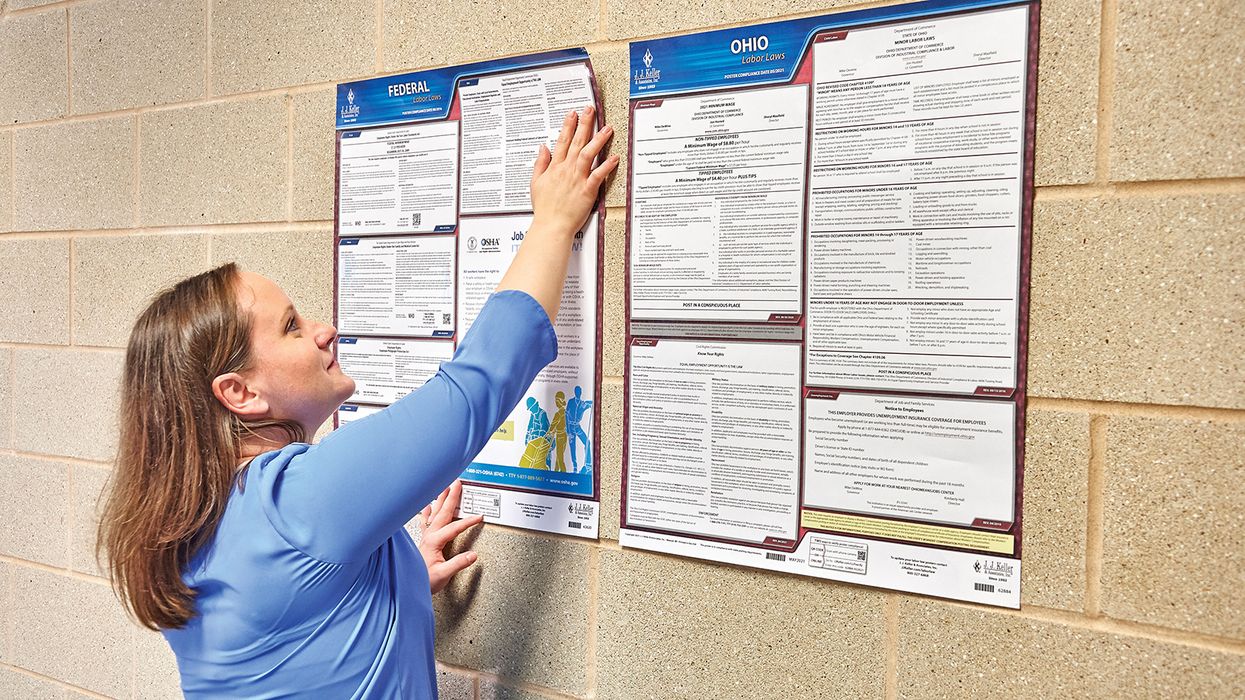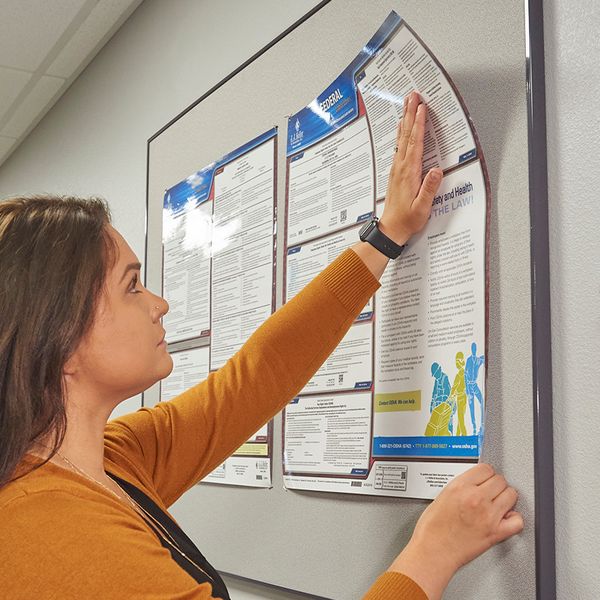3 ways to avoid the higher Know Your Rights poster fine
Failing to properly post anti-discrimination information recently became more expensive.
On February 16, the Equal Employment Opportunity Commission (EEOC) raised the Know Your Rights: Workplace Discrimination is Illegal posting penalty to $680 for each separate offense. An employer’s fine could add up quickly if multiple incidents of non-compliance were identified.
The risk of being hit with this penalty is higher than for some other workplace postings because:
- The poster must be seen by applicants as well as employees.
- The EEOC wants it to be seen by remote workers.
- Posting it is often required when a company has a federal contract.
To reduce the risk of noncompliance, companies should pay attention to how the poster is displayed across an organization. Here are three considerations:
No. 1: Properly post for applicants
In general, the Know Your Rights posting (which is required when an employer has 15 or more employees) must be placed in a prominent and accessible place where notices are usually posted. Employers often place this posting, and other labor law posters, on the wall in a break room or near common entrances.
Because applicants don’t typically visit the company’s break room or use the employee entrance until they’re hired, employers might not be fulfilling the requirement to ensure that applicants can see the poster.
To remedy this, the Know Your Rights posting could also be placed in an interview room or another place where applicants have access to it. Two other federal postings should also be visible to applicants: The Employee Polygraph Protection Act (EPPA) and Family and Medical Leave Act (FMLA) postings. Employes should make sure all three postings are easily accessible to individuals who are applying for a job.
For applicants who apply online, a link to the postings could be placed on the website used by job applicants. The federal government suggests that it says: “Applicants have rights under Federal Employment Laws.”
No. 2: Properly post for remote workers
Employees who work from home don’t have the opportunity to see the workplace posters displayed in a break room or near an entrance, but should still have access to information about their rights.
The EEOC is attuned to the needs of remote workers. While the agency does not require employers to mail a physical copy of the Know Your Rights posting to remote workers, it does allow electronic posting to meet requirements when an employee works from home. It notes on its posting website that: “In most cases, electronic posting supplements the physical posting requirement. In some situations (for example, for employers without a physical location or for employees who telework or work remotely and do not visit the employer's workplace on a regular basis), it may be the only posting.”
To make sure the electronic version of the posting is easily accessible to remote workers, a link to the posting can be prominently placed on the company’s intranet. It could also be placed in a shared folder that’s easily accessible to all employees.
No. 3: Properly post under a federal contract
Federal contractors need to display the posters required in their contract. This requirement often includes the Know Your Rights posting.
Most postings required under a federal contract need to be displayed where work is being done under the contract. There are additional requirements for the Know Your Rights posting, however.
Postings required by the EEOC, like the Know Your Rights posting, must be visible to all employees, whether they are working on the contract or not.
As the Know Your Rights posting is generally required to be displayed when an employer has 15 or more workers, it’s likely that most federal contractors are meeting this requirement. However, when the posting requirement is part of a federal contract, even employers who have fewer than 15 employees need to make sure the poster is visible to all workers.
Key to remember: The Know Your Rights posting must be available to applicants and remote employees as well as on-site workers. In addition, it is often required to be displayed as part of a federal contract. Employers should make sure it is easily accessible to all workers who have rights under anti-discrimination laws.



















































